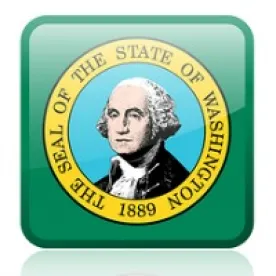With an amended Proclamation, Washington State Governor Jay Inslee announced on July 29 that Proclamation 20-46 regarding Washington “high-risk” employees will be extended through the duration of his current State of Emergency and provide expanded protections to those workers.
As an accompanying guidance memo clarifies, this Proclamation protects three categories of employees:
-
Employees who are age 65 or older;
-
Employees whose conditions are listed by the Centers for Disease Control and Prevention (CDC) under the “increased risk” category, including employees with cancer, chronic kidney disease, chronic obstructive pulmonary disease; immunocompromised state (weakened immune system) from solid organ transplant; obesity with a body mass index of 30 or higher; serious heart conditions like heart failure, coronary artery disease, or cardiomyopathies; sickle cell disease; or Type 2 diabetes mellitus; and
-
Employees whose conditions are listed by the CDC under the “might be at increased risk” category, but only if, based on the employee’s medical circumstances and workplace conditions, the employee is in fact at increased risk for suffering severe illness from COVID-19. This category includes employees with moderate-to-severe asthma; cerebrovascular disease; cystic fibrosis; hypertension or high blood pressure; immunocompromised state from blood or bone marrow transplant, immune deficiencies, HIV, use of corticosteroids, or use of other immune weakening medicines; neurologic conditions, such as dementia; liver disease; pregnancy; pulmonary fibrosis; smoking; thalassemia; or Type 1 diabetes mellitus.
Generally, employers may not require verification from an employee’s medical provider for an employee age 65 or older or in the “increased risk” category.
However, employers may require verification from an employee’s medical provider when the employee falls within the “might be at an increased risk” category (the third category above). In addition, employers may still require verification from an employee’s medical provider when the employee seeks to use any leave where a state or federal law, collective bargaining agreement, or contractual obligation separately requires verification (including, but not limited to, Washington Paid Sick Leave, any employer-administered paid leave, paid leave under the federal Families First Coronavirus Response Act, and unemployment insurance compensation).
“High-risk” employees still have the following rights under this Proclamation:
-
When employees request alternative work arrangements to protect themselves from the risk of exposure to COVID-19 on the job, employers must utilize all available options, including telework, alternative or remote work locations, reassignment, and social distancing measures. If alternative work arrangements are not feasible, employers must allow employees to use all of the employee’s employer-granted accrued leave options or unemployment. It is the employee’s decision to use accrued leave or unemployment insurance in any sequence.
-
If the employee’s paid time off is exhausted during the period of leave, the employer must fully maintain all employer-related health insurance benefits until the employee is deemed eligible to return to work. The Proclamation does not explain how the employee would be “deemed” eligible to return to work or what it means to “fully maintain” insurance.
-
Employers may not retaliate against, or take adverse employment action in a way that would result in the permanent replacement of, employees who exercise their rights under the Proclamation.
-
Employers and unions cannot enforce any provisions in an employment contract that contradict or interfere with the Proclamation.
-
Employers should construe the Proclamation to protect employees from losing their positions or employment benefits, or from retaliation for decisions related to the Proclamation.
-
Employers may hire a temporary employee, as long as it does not negatively affect the “permanent” employee’s right to return to their existing position without any negative ramifications.
-
An employer may require an employee who does not report to work in reliance on the Proclamation to give the employer up to five days’ notice of the employee’s intention to report or return to work.
-
Employers may take employment action when “no work reasonably exists,” such as a reduction in force. However, where no work exists, employers may not take action that may adversely affect the employee’s eligibility for unemployment benefits.
Any violations of the Proclamation are subject to criminal penalties (as is the case with all of the Governor’s recent Proclamations).





 />i
/>i
